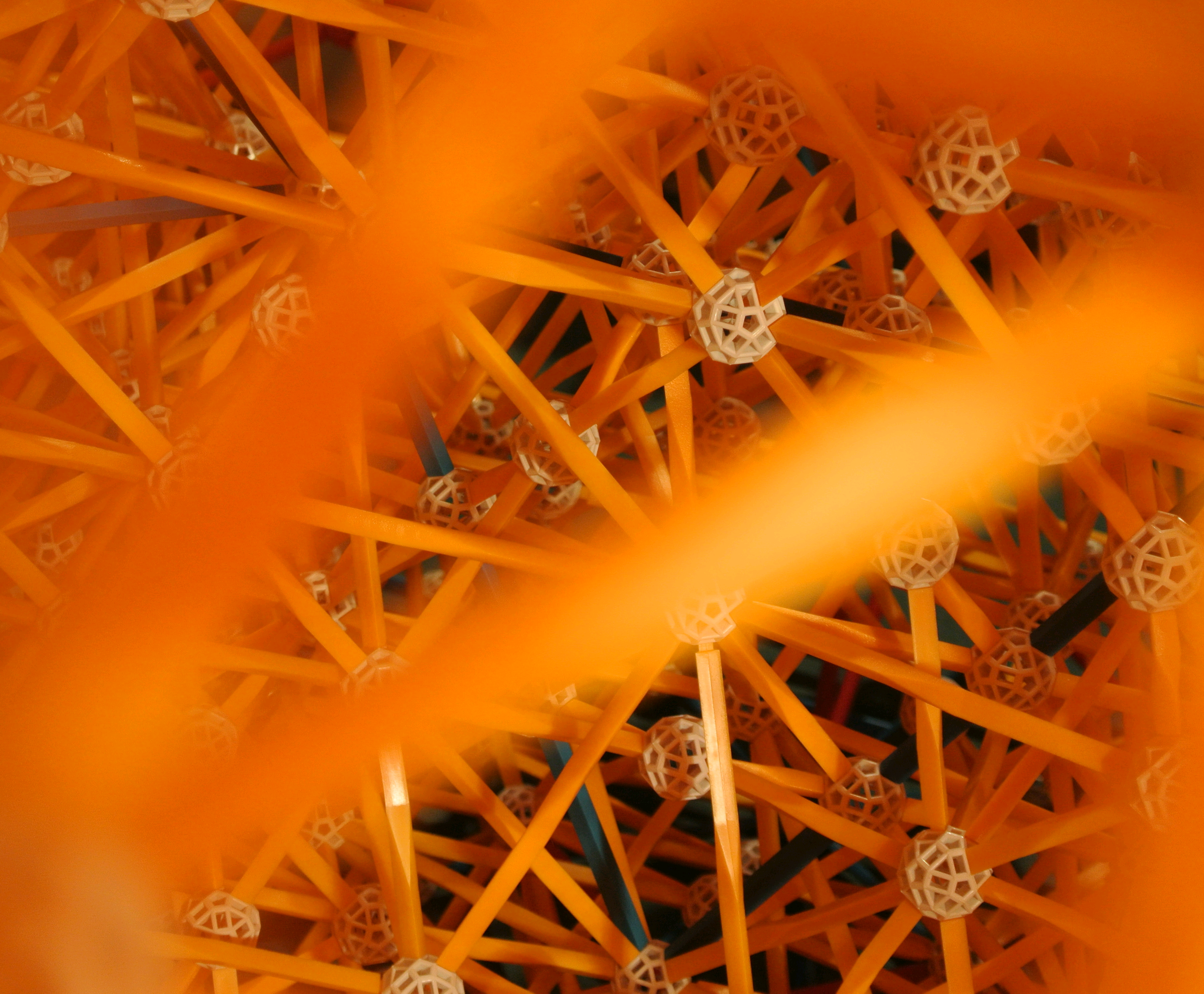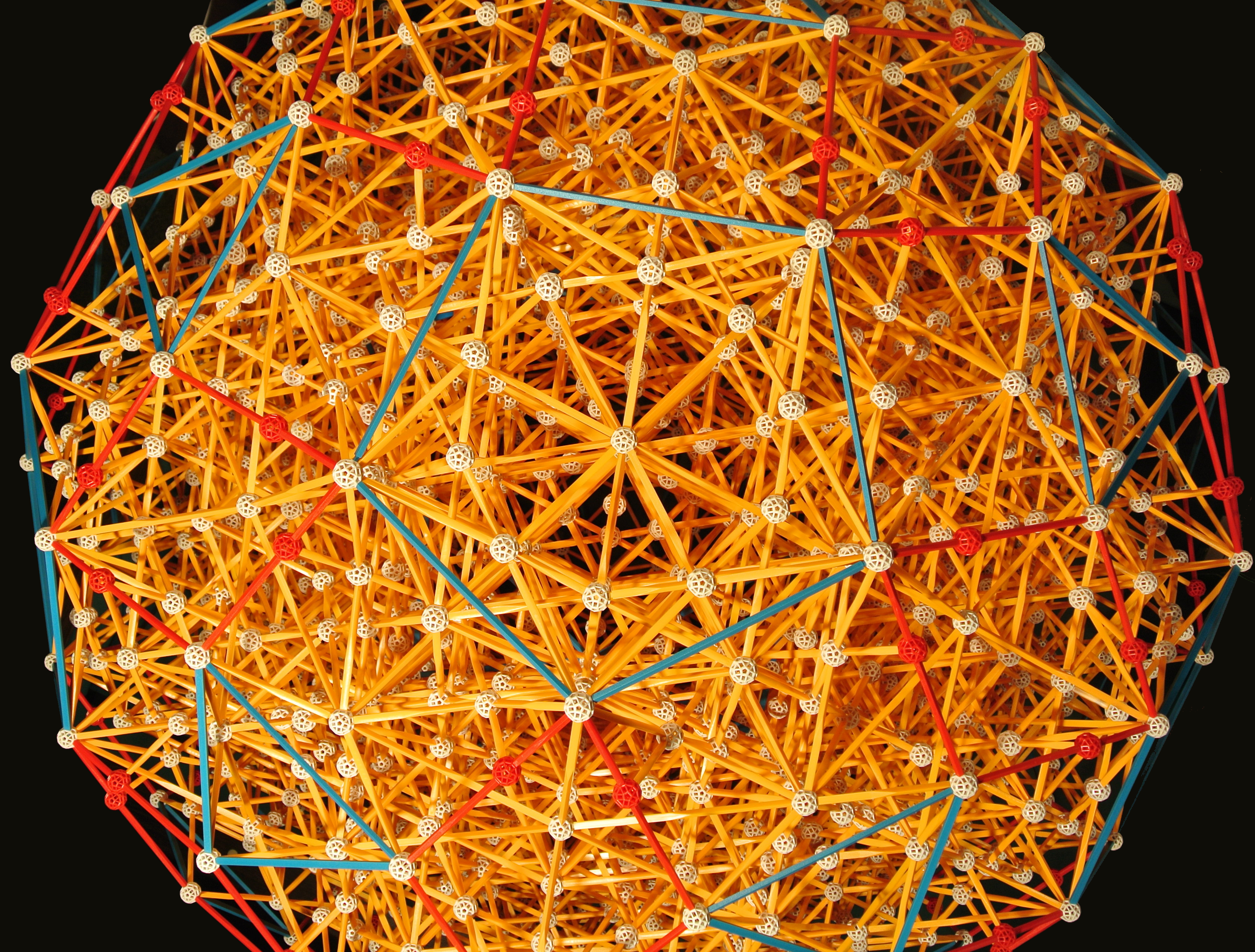The first vZome model shows the boundaries defining the selection criteria to determine which struts have been reproduced in the physical Zometool model.

The Complete 10-cube model has a (yellow) rhombic enneacontahdron with edge length y4 as envelope. A φ2 smaller enneacontahedron (edge length y2) has been paneled in the model. This enneacontahedron nearly touches a (blue) icosidodecahedron with edge length b3. One of the pentagonal faces of this icosidodecahedron defines a bottom plane, coloured dark grey. Inside the outer enneacontahedron, one can distinguish an expanded icosidodecahedron with b3 and r3 edges. Representing 10-cube edges outside the expanded icosidodecahedron would require y4 struts. Representing 10-cube edges inside the smaller enneacontahedron would require y00 struts. Therefore only struts in between the expanded icosidodecahedron and the smaller enneacontahedron are represented. Moreover, mainly to avoid stability issues during the build proces, struts below the bottom plane are not reproduced. The second vZome model shows all the struts (about 40% of the total number required) which are neglected in the physical model.

The bottom plane of the physical model is reinforced by a mesh of blue and red struts, as shown in the third vZome model. Although the model becomes quite heavy during the building proces, thanks to this reinforcement the construction can easily glide over the bottom plane and be rotated through the vertical axe.

The final vZome model contains the step-by-step building instructions. Once this model was designed, the construction of the physical model was rather easy.
